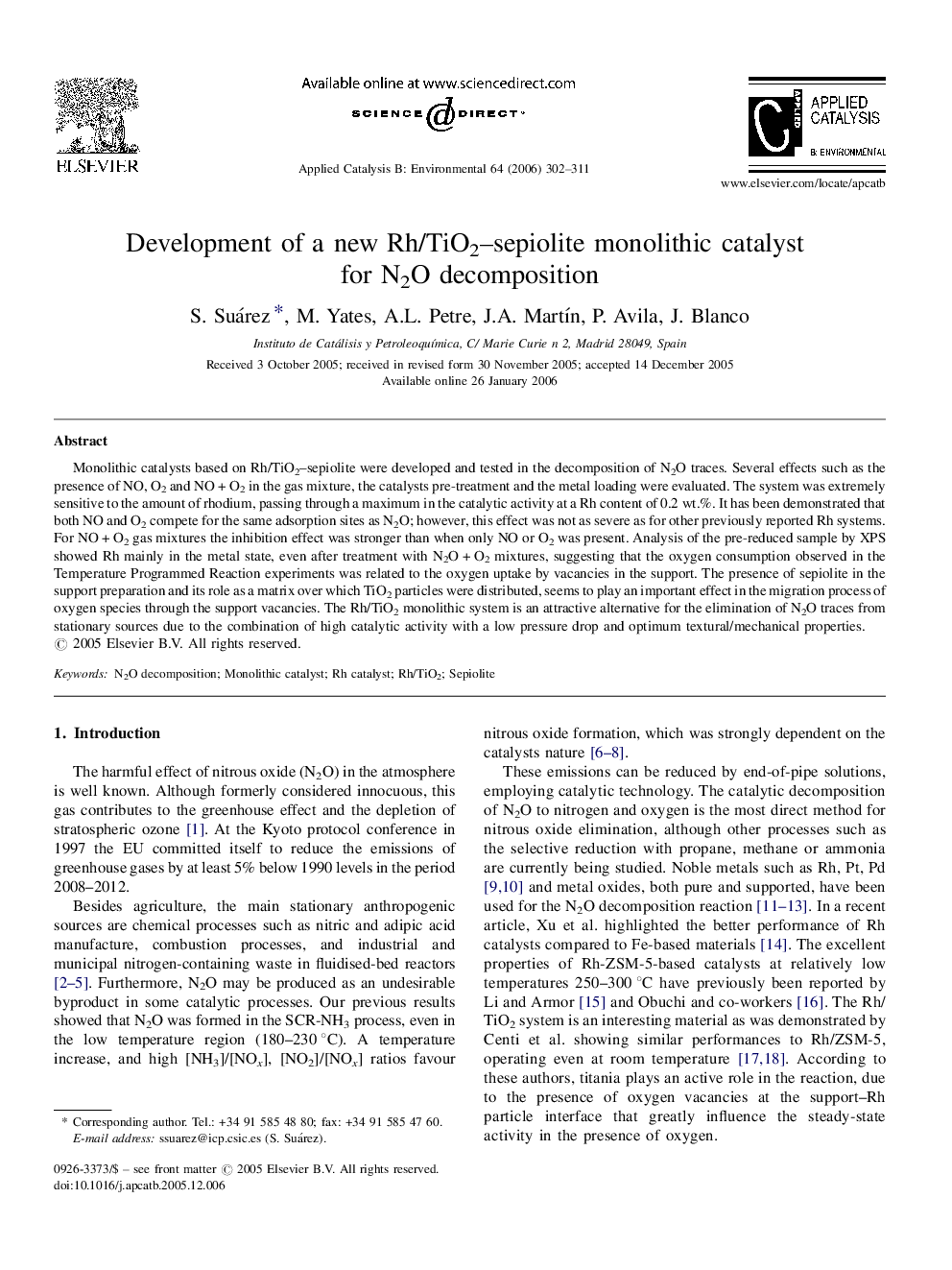| Article ID | Journal | Published Year | Pages | File Type |
|---|---|---|---|---|
| 49013 | Applied Catalysis B: Environmental | 2006 | 10 Pages |
Monolithic catalysts based on Rh/TiO2–sepiolite were developed and tested in the decomposition of N2O traces. Several effects such as the presence of NO, O2 and NO + O2 in the gas mixture, the catalysts pre-treatment and the metal loading were evaluated. The system was extremely sensitive to the amount of rhodium, passing through a maximum in the catalytic activity at a Rh content of 0.2 wt.%. It has been demonstrated that both NO and O2 compete for the same adsorption sites as N2O; however, this effect was not as severe as for other previously reported Rh systems. For NO + O2 gas mixtures the inhibition effect was stronger than when only NO or O2 was present. Analysis of the pre-reduced sample by XPS showed Rh mainly in the metal state, even after treatment with N2O + O2 mixtures, suggesting that the oxygen consumption observed in the Temperature Programmed Reaction experiments was related to the oxygen uptake by vacancies in the support. The presence of sepiolite in the support preparation and its role as a matrix over which TiO2 particles were distributed, seems to play an important effect in the migration process of oxygen species through the support vacancies. The Rh/TiO2 monolithic system is an attractive alternative for the elimination of N2O traces from stationary sources due to the combination of high catalytic activity with a low pressure drop and optimum textural/mechanical properties.
